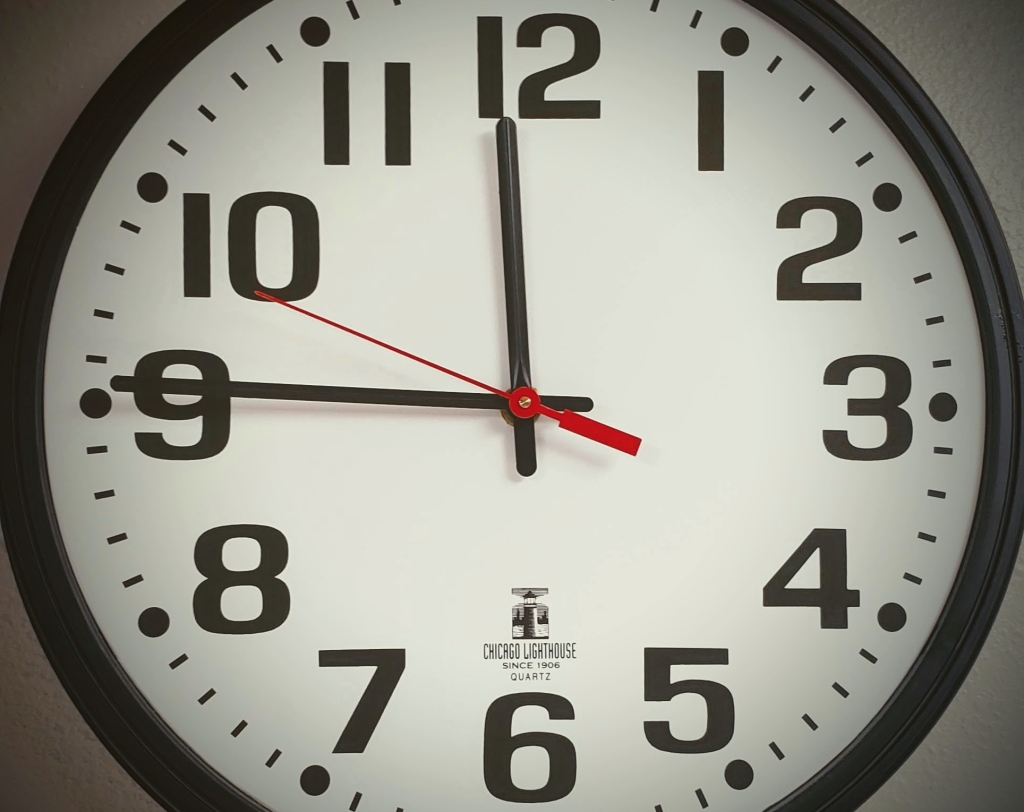The question to be answered is, am I responsible? Can anyone be held to account for the actions of others? Even if unconsciously there is influence, and obviously that must be the case or else we couldn’t exist together as social beings, that does not imply guilt or responsibility. This is the argument I use to ease my pain. But all the logic in the world cannot overcome powerful feeling. It is hard to argue against the testimony of the heart. Did I help to unleash the forces of destruction, or only observe, lacking the authority to intervene?
Karen was a brilliant woman, effervescent with ambition and energy. She could see through all fakery and pretention and she could prize from you your deepest thoughts just by opening her eyes and giving you a quizzical look. I became her lover, because I wanted to, oh how I wanted to, but also because it was impossible to deny her. It was as if there was some kind of destiny that drew me towards her. She knew I was necessary. And in this way, I became her enabler and her accomplice, though of course I was not a creator, I was not the originator of her extraordinary endeavours. They were, as everyone appreciated, all her own work.
I was her driver and her manager to some extent, in that I took it upon myself to make sure that payments were made on time and that bookings were secure. Given the line of work we were in, this was no easy matter. Our exits were always swift, for the suspicion of illegality hounded us wherever we went, notwithstanding our loyal, and sometimes frankly disturbed following.
Karen was a performance artist. Neither of us were particularly happy with the term. It smacked of 1960s anti-war posturing or post-postmodernist grandstanding. But there was no other description that could distinguish theatre and cabaret from what Karen did. She called herself a “protean sculpture,” but, as you can imagine, that was not the most marketable of labels. Not that Karen was interested in markets – she accepted that we had to make some money in order to keep ourselves alive, but she despised the petty bourgeois haggling over contracts and distanced herself as much as she could from this aspect of the enterprise. I admired her purity, but then again someone had to handle the cash and argue the toss. I never resented doing any of these things, but if Karen was to remain pure then I, of necessity, was going to get my hands dirty.
Karen did not take off her clothes on stage, but in order for her audience to appreciate the physical truth of performance, as she liked to call it, she appeared in her underwear. We had a long discussion about underwear and whether or not there should be an erotic charge, as I liked to call it, in her act. She accused me of crass, misogynistic voyeurism and used only Marks & Spencer bras and knickers in either white or black. No compromise.
Karen let blood on stage, that’s the simplest way of putting it. She leapt and glided and she cut herself with a knife. Her body was completely covered in scars. She used a straight razor, the kind of thing you’d find in a 1930s barber’s shop. She also declaimed to the audience while she was moving and cutting herself open. I foolishly referred to what she said as poetry, but she told me this was an infantile categorisation that simply fed my undeveloped need to classify in an unhelpful and reductive manner. She called her addresses “rhetorical howling” and said her greatest influences were Cicero and Mary Wollstonecraft. She allowed that there was a poetic element to each utterance, but that the words could not be separated in any way from the circumstances of their delivery. She had no interest in having anything published. She was also vehemently against any background music being played; another of my unwelcome suggestions. Background anything is an abomination, she told me. Music, and she only liked difficult music, should be unsullied as it castigates the listener with the uncomfortable truth of its social isolation. She said that her understanding of music had been utterly transformed by reading Adorno and urged me to do the same.
Just to complete the list of my errors in describing her work, she resolutely refused to call her movements dance, as it seemed to me perfectly reasonable and indeed complimentary to do. She said that dance, while once an acceptable artistic medium, had been totally colonised by kitsch, and relentless commercialisation had rendered it unable to express either grace or violence. She called what she did, “ecstatic negation,” which I felt didn’t capture the essence of her fabulous twists and gyrations.
She would come on stage and stare in silence at the audience for an uncomfortably long time, occasionally leading to a heckle or two. Believe me, you didn’t want to heckle Karen. She would descend upon the unruly disruptor, make a quick incision into a limb and spray her blood directly into his or her eyes, before leaping back on stage to continue. She spoke, and her voice was clear and loud and terrifying, and she began to cut and it was like an exquisite calligraphy that she etched out in blood upon her skin. She moved, lithe and weightless and traced out red patterns on the stage with her feet. She flew into the air and landed softly as a bird descending, letting droplets of her ruby life fall like jewels. She withdrew into a human cocoon and lay still while murmurs passed through the audience that she was unconscious or worse. But then, always startling, always unexpected, she would rise up in fury and scream. Her extraordinary cry seemed to emanate from the very earth as red mist settled on all those present. It was quite a show.






As time went on it became more of a challenge to secure decent venues for Karen to perform in. Reputation is a blessing and a curse; as more and more people wanted to see the show so there were attempts to have it banned. We were interviewed by the police several times. Luckily Karen resorted to her art discourse vocabulary and when she answered yes or no questions with phrases such as “I cannot answer you without a full exegesis of the dialectic of disquiet,” which usually sent them on their way, muttering about not doing it again. There were serious intellectuals in our following, who Karen respected and with whom she would enter into lengthy correspondence about the body as art. But there were also some idiots who thought they were vampires and who came to suck as much blood as they could.
After the shows, Karen was exhausted – as anyone would be – but also weak from the blood loss. Initially we dealt with this by letting her rest and feeding her as much iron and liquid as possible. We also set a ten-day minimum break between performances to ensure she recovered properly. However, after one exceptionally vigorous performance it became clear that natural recovery was not going to be enough on its own. I took Karen to A&E at the nearest hospital and explained that she was a self-harmer with a personality disorder, so that they would admit her and give her a blood transfusion. Karen had devised this tactic for emergencies, having foreseen that something like this might happen. She knew that the hospital would be duty bound to treat her for the results of self-harm but would not detain her, because she claimed to have a personality disorder – and transfer to a psychiatric ward was usually counter indicated for people with personality disorders.
Karen lived for her art, she was her art; there was no separation between the two. Her mind, body and performance were, in her words, “inextricably synthesised as a radical and permanent revolution of artistic aggression against the supine reaction of neo-liberal complacency.” I couldn’t help but agree. Unfortunately, she found the transfusion process intoxicatingly stimulating. She claimed that it gave her greater insight than she had ever had before and was in itself a part of her performance. She began to reject the established prescription of rest and nourishment following a stage appearance, insisting that she be taken to hospital for a transfusion. It was also at this time that she began to talk to me about what she called the ultimate performance.
Following a visit to A&E where she was refused a transfusion because her blood count wasn’t seriously compromised, she became determined that she would always get what she wanted on future visits. This resulted in her cutting more deeply and losing more blood. Unfortunately, that wasn’t the limit of her resolution. She began to take warfarin, which she obtained easily on the internet. Warfarin is an anti-coagulant that thins the blood. This enabled her to project her blood further into the audience during performances but also to ensure that her blood count was sufficiently low enough to receive the desired transfusion.
Aware that repeat presentations at the same A&E department would lead to refusal, psychiatric detention, arrest, or possibly all three, we never performed twice in a row in the same city or town. But even our careful scheduling didn’t stop Karen from eventually being admitted onto a mental health ward against her will. The staff subjected her to what most may think of as perfectly reasonable warnings. What she was doing was extremely dangerous and was putting her life at risk. She was also lucky not to have picked up some opportunistic infections, as her immune system was struggling with the lack of blood, and the fact that she was always nursing open wounds was an invitation to septicaemia.
But Karen was contemptuous of the medical advice she was given. She tried to engage the psychiatrist in a debate about the creative tension between risk and art. She tried declaiming some of her rhetorical howling. She ended up in seclusion, heavily medicated and unable to think clearly. I was furious. I demanded her release, in writing, as the legislation permits, but it was blocked on the grounds that she would act in a manner that was dangerous to herself upon release. But when your entire life is a danger to yourself, when your raison d’etre is total danger, then this is a pretty absolute interference. Are you going to keep her detained forever, I enquired? What about pearl divers, free climbers and base jumpers, are you going to lock them up as well? I had a right to apply to something called a Mental Health Tribunal, that is an independent panel, which would review her detention, and I eagerly exercised my right as her nearest relative, within the meaning of the law.
In the end, she was released before the tribunal took place. They’d simply had enough of her. The psychiatrist had lost interest or had surrendered to Karen’s persuasive logic – her relentless hectoring, as I sometimes put it. Having to face a tribunal must have made him less convinced about the strength of his argument. Not that we weren’t both chastened by the experience. It was enough for me to seek and receive assurance from Karen that she would give up both warfarin and transfusions. She admitted that she had become addicted and that neither were necessary for her art, which could still make an impact, albeit in a slightly less watered-down way.
I loved Karen. I’d never loved anyone so much before and I’m sure I never will again. She had such a persuasive, prickly, dark, yet magnificent personality. There was nothing disordered about it, quite the opposite in fact: she had meticulously analysed and strategised every aspect of her life, and every aspect of mine as well I suppose. But she had such a generous energy, her mind crackled like a forest fire. She was unstoppable, a blazing fury in the firmament of my universe. She made me feel like a shooting star, reaching for the furnace of her beautiful soul. So I would and did do anything for her. I could be persuaded that day was night and night was day, that right was wrong and wrong was just another minor hurdle on the path to artistic fulfilment.
The month after she was discharged from hospital was the happiest period of my life. We spent all our time together, and I wrapped her around my heart and breathed her flames. We made love all the time and drank herbal tea. I fed her a diet of superfoods and Kentucky fried chicken, just to keep her strength up and put some meat on her steely bones. Then when she was ready, we booked another performance. She had been furiously making notes, and declaiming her glorious howlings to me and, even though I found them impossible to understand, I was intoxicated. I hired some very expensive video equipment to film the show, as a response to the huge online demand for footage.
It was her best performance, but also her last. She leapt and yelled and contorted and transfixed the audience so that she had them in worshipful amazement at her every gesture. But at that crucial moment, instead of sweeping imperiously offstage, she took her razor and sliced her carotid artery lengthwise, releasing a spume of scarlet, like a solar flare, cascading onto all of us. And then, of course, she collapsed, dead.
Could and should I have stopped her? I was complicit, yet I was also powerless to stop such a supernova of artistic perfection. Oh yes, it was art alright – radical, disturbing, provocative art. She was never going to live outside or beyond the danger of her craft. Morally you might argue that I should have done my utmost to shift her attention onto a less fatal path, a style of performance that was not life threatening. Well, morally perhaps you’re right, but aesthetically you can all go to hell. She died for her art.
All that is left to me is the video of her final performance. It remained on YouTube for two weeks for the delectation of her devotees, before it was inevitably removed by the censors. I watch her over and over again, replaying that last moment. Am I responsible? Yes, please, please let me be responsible.
We release new stories multiple times every week, and the easiest to stay up to date with our new content is by subscribing to our content.

















Leave a Reply